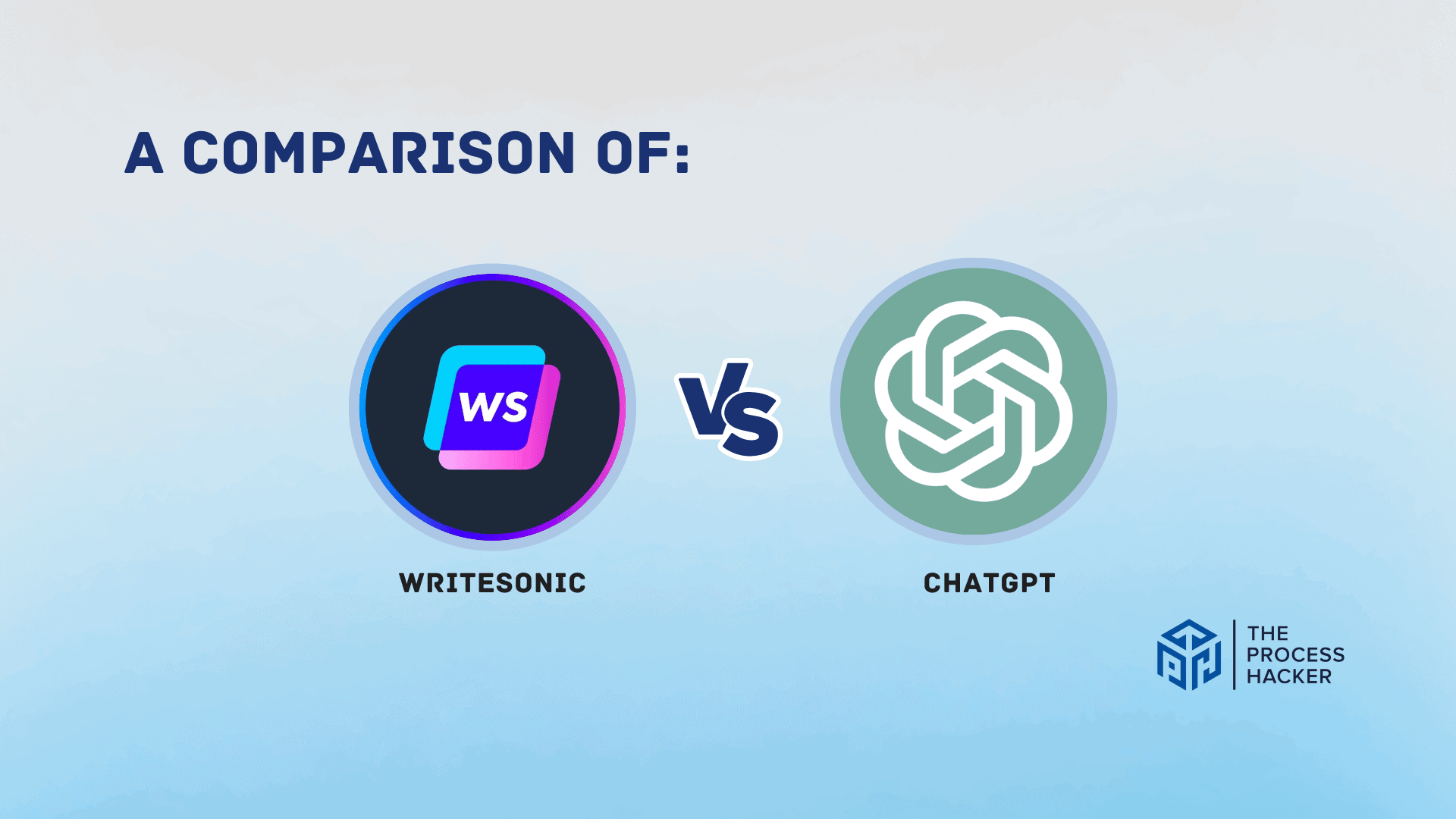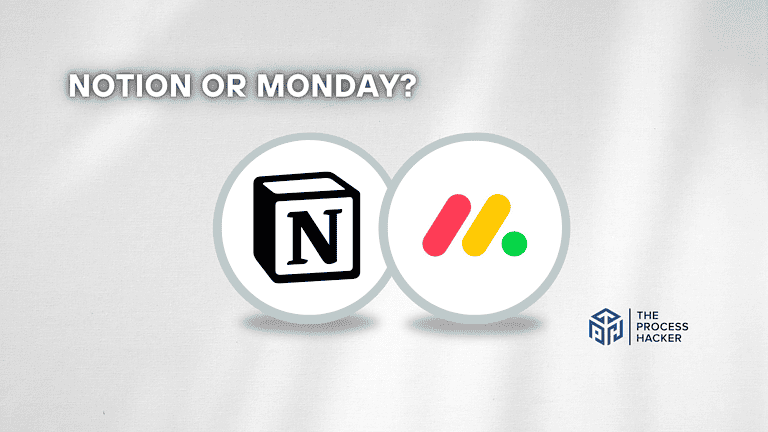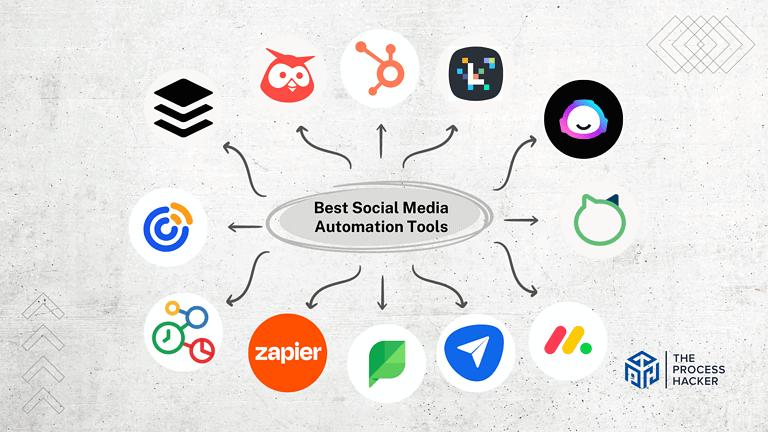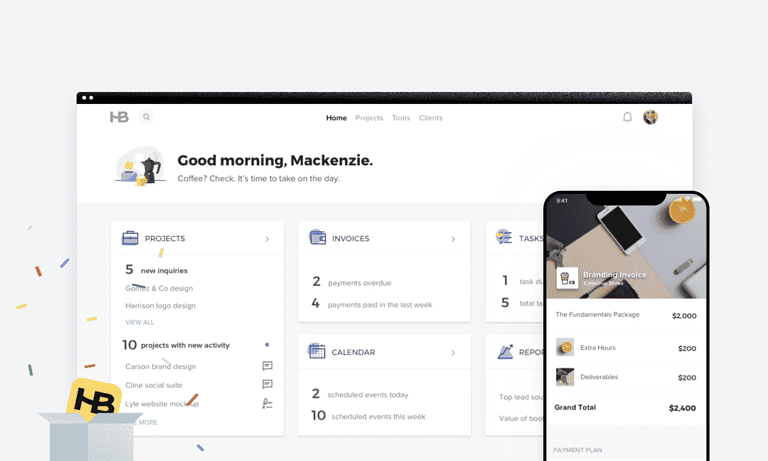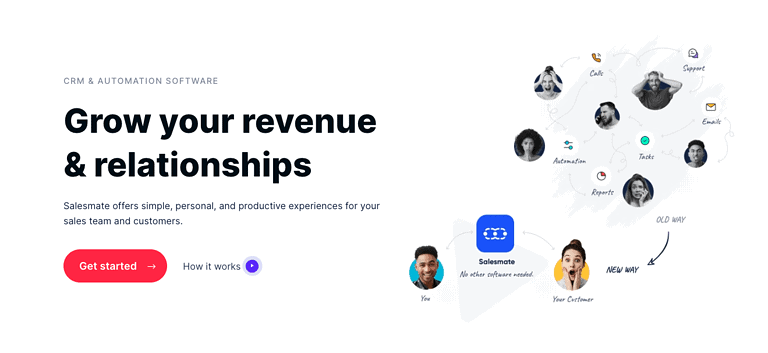Writesonic vs ChatGPT: Which AI Writing Tool is Better for Content Creation?
AI writing assistants have become increasingly popular tools for content creators and writers looking to be more productive while maintaining high-quality outputs.
However, with so many new options regularly emerging on the market, it can be challenging to determine which tools are beneficial and which are just hype. In this review, I will examine two incredible AI writing tools—Writesonic and ChatGPT—to understand their relative strengths and drawbacks.
If you purchase through our partner links, we get paid for the referral at no additional cost to you! For more information, visit my disclosure page.
By comparing their key features, such as topic understanding, writing style, formatting support, and more, I aim to evaluate the most suitable tool for content creation work.
While both Writesonic and ChatGPT boast impressive capabilities, this evaluation aims to separate fact from fiction so you can feel confident in choosing the AI assistant that best suits your specific writing needs and workflows.
Brief Overview: Writesonic vs ChatGPT
First, I’ll give you a quick overview of Writesonic and ChatGPT:
Writesonic
Writesonic is an AI-powered writing assistant designed to help you generate high-quality content quickly. Whether you’re looking to create engaging blog posts, marketing copy, or even emails, Writesonic aims to streamline the process, making it easier to produce content that captivates your target audience.
Key Selling Points:
- Rapid Content Generation: Produce articles, emails, and more in minutes.
- Marketing Copy Focus: Specializes in creating compelling ad copies, product descriptions, and landing pages.
- User-Friendly Interface: Simplifies the content creation process with an intuitive dashboard.
- SEO Optimization: Offers tools to help your content rank higher in search engine results.
ChatGPT
ChatGPT, a variant of the GPT language model developed by OpenAI, is designed for understanding and generating human-like responses to the given prompts. This tool can assist in a wide range of tasks, from drafting emails to writing creative stories, providing a versatile solution for various writing needs.
Key Selling Points:
- Versatile Writing Assistant: Capable of handling a wide array of writing tasks beyond marketing content.
- Interactive Dialogue Format: Allows for a conversational approach to content creation, refining output through feedback.
- Continual Learning: Adapts and improves responses based on user interaction and feedback.
- Language Understanding: Exhibits a deep understanding of context and nuance in language.
Quick Verdict: Writesonic vs ChatGPT
Writesonic is not just another writing assistant; it’s engineered to provide structure and creativity for your content strategies for an array of templates, from email marketing to ad copy. It guides you through the process, ensuring the final product is polished and market-ready.
Its AI fine-tunes the generation of engaging and relevant content that resonates with your audience, making it indispensable for content creators who focus on marketing and sales.
This adaptability is grounded in ChatGPT’s conversational design, allowing it to understand context and provide nuanced responses. Whether drafting an article, coding, or seeking educational support, ChatGPT offers insightful and context-aware interactions.
Its ability to learn from each conversation enhances its utility across diverse applications, establishing it as a versatile partner in your creative and technical endeavors.
Product Overview: Writesonic vs ChatGPT
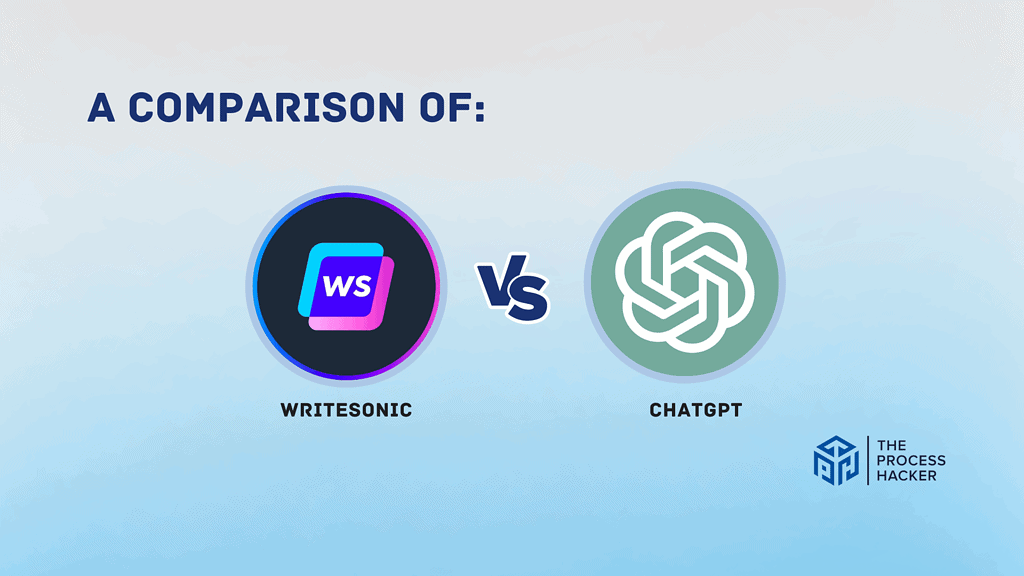
What is it?
Writesonic is an AI-powered tool designed to supercharge your content creation process, especially regarding marketing material. It’s like having a 24/7 copywriter ready to generate high-converting content at the click of a button.
ChatGPT is a versatile AI tool that generates a wide range of text-based content, from emails and articles to stories and code, through a conversational interface. It’s your go-to for creating anything that involves words.
Who is it for?
Writesonic is perfect for marketers, entrepreneurs, and businesses looking to scale their content production without compromising on quality. If you need compelling ad copies, product descriptions, or landing pages, Writesonic has got your back.
ChatGPT is ideal for writers, educators, programmers, and anyone needing creative or technical writing assistance. Whether drafting a novel, preparing educational materials, or coding, ChatGPT can help streamline the process.
What makes it special?
Writesonic stands out for its focus on marketing content, offering tools specifically designed to enhance your texts’ persuasiveness and SEO friendliness. Its unique selling proposition is its ability to produce content that reads well and drives conversions rapidly.
ChatGPT is unique because of its versatility and depth of understanding across various topics. It’s not just about generating text; it’s about crafting human-like responses, making it incredibly useful for various writing tasks.
What does it do?
Writesonic leverages advanced AI to offer tools that help you create content that captures attention and converts. From generating blog posts and emails to creating ads and social media posts, it ensures your marketing voice is consistent and compelling.
ChatGPT, on the other hand, engages you in a conversation to understand your writing needs. Based on your feedback, it can then generate drafts, provide suggestions, or even refine content. It’s like having a writing partner available anytime to bounce ideas off or help you overcome writer’s block.
Quick Comparison: Writesonic vs ChatGPT
| Key Features | Writesonic | ChatGPT |
|---|---|---|
| #1) Pricing | Tie | Tie |
| #2) Free Plan | Tie | Tie |
| #3) Design & Functionality | Winner | |
| #4) AI-Powered Content Generation | Tie | Tie |
| #5) Versatility in Content Types | Winner | |
| #6) Natural Language Processing Tasks | Winner | |
| #7) Research Assistance | Winner | |
| #8) Integration Capabilities | Winner | |
| #9) Content Optimization Features | Winner | |
| #10) Knowledge of Different Languages | Winner | |
| Overall | For written content or content generation | For research assistance or gathering information |
Feature Comparison: Writesonic vs ChatGPT
Let’s compare the features of these AI writing tools so you can make the right decision for you and your business.
#1) Pricing
Writesonic’s pricing begins with an Individual Plan tailored for freelancers and content creators at $20 per month. For those needing collaboration or higher capacity, Writesonic offers Teams and Enterprise Plans, designed to cater to the needs of businesses and agencies and provide more advanced features and support.
On the other hand, ChatGPT Plus is available for $20 per month, offering enhanced capabilities over the standard version. For teams requiring broader access and higher usage caps, particularly in professional settings, a specific Team Plan scales according to your requirements.
When comparing the two, pricing decisions depend on your specific needs. If you’re an individual primarily focused on content creation and need a variety of templates and marketing tools, Writesonic’s Individual Plan is compelling. For those wanting robust AI conversational capabilities and broader applications, including team functionalities, ChatGPT Plus and its respective Team Plan offer substantial value.
Verdict: The decision is a tie for pricing, as both Writesonic and ChatGPT offer plans at $20 per month, efficiently addressing different needs. Your choice should align with your priorities: specialized content creation tools or versatile AI conversation capabilities.
#2) Free Plan
Writesonic offers a perfect free plan if you’re just starting or want to test its capabilities before committing financially. This plan typically includes access to basic features, a limited number of credits for generating content, and an introduction to the range of templates and tools available.
ChatGPT also provides a free version, allowing you to explore its conversational AI and general writing capabilities without any upfront cost. This access is invaluable for understanding how ChatGPT can assist in various tasks, from content creation to information gathering and casual conversations.
Comparing these free plans, you’ll find that each has advantages depending on your content creation needs. Writesonic’s free plan is geared toward those who need structured content creation tools with specific templates. In contrast, ChatGPT’s free access suits those looking for versatile AI interaction and a broad range of applications.
Verdict: For the free plan, it’s a tie between Writesonic and ChatGPT. Your preference should depend on whether you seek specialized content creation support or broad, conversational AI capabilities. Both platforms provide a valuable opportunity to trial their features and determine which aligns best with your creative process.
#3) Design & Functionality
Writesonic’s interface is designed around templates. If you need a product description, ad copy, or a blog outline, there’s likely a template to get you started. This structure makes learning how the tool works easy, especially if you’re new to AI writing.
ChatGPT’s strength lies in its conversational style. You interact with it like a chatbot. Instead of templates, you give it instructions or prompts, and it generates text based on your request. This offers much flexibility, but it might have a steeper learning curve.
When considering design and functionality, the better choice depends on your specific needs and preferences. Writesonic is tailored for content creators seeking a guided, template-driven approach, which is particularly useful for marketing and sales-related content. ChatGPT offers a versatile environment that’s easy to interact with, catering well to diverse needs ranging from casual conversations to detailed content development. Still, Writesonic’s dedicated template for each content made it stand out.
Verdict: For those who prefer a guided content creation experience, Writesonic‘s design shines.
#4) AI-Powered Content Generation
Writesonic has an advanced AI that generates high-quality, engaging content across various formats. Whether you need blog posts, SEO meta tags, emails, or marketing copy, it’s designed to deliver content that resonates with your audience, backed by a deep understanding of effective communication strategies backs it up.
ChatGPT impresses with its ability to understand and generate human-like text, making it incredibly versatile for a wide range of content creation tasks. From drafting articles to crafting detailed responses, its strength lies in mimicking human conversation patterns, providing a natural flow to the content it produces.
Deciding which tool is superior in AI-powered content generation hinges on your needs. If your focus is on creating marketing materials with a tool tailored for commercial content, Writesonic might be the better fit. However, for broader applications requiring a human-like touch and versatility, ChatGPT could be more suited to your needs.
Verdict: For AI-powered content generation, it’s a tie. Writesonic shines for targeted marketing content, while ChatGPT offers unparalleled flexibility and a human-like quality across diverse content types.
#5) Versatility in Content Types
Writesonic stands out for its specialized approach to content creation. It offers templates and tools specifically designed for a wide range of content types, from SEO-focused articles to landing pages and digital ads. It provides targeted support that helps you craft content with a specific purpose and audience in mind.
ChatGPT’s strength lies in its adaptability, enabling you to create diverse content types through conversational or user inputs. Whether you’re looking for blog post writing, generating creative stories, or even developing code snippets, its flexible nature allows for a broad spectrum of content generation without needing specialized templates.
Regarding versatility in content types, ChatGPT takes the lead due to its wide-ranging capabilities that accommodate nearly any content creation need you might have. Its ability to understand and generate various forms of content through simple prompts makes it an invaluable tool for those seeking flexibility and creativity in their content generation process.
Verdict: ChatGPT is the more versatile tool for creating a sheer variety of content.
#6) Natural Language Processing
Writesonic understands how to structure language for marketing purposes. It’s trained on marketing and sales-related content, so the copy it generates sounds tailored to those specific goals. This gives it an edge when you need to write persuasively.
ChatGPT excels at understanding the nuances of human language. It can answer your questions, follow instructions, and fluently compose different creative text formats. It’s a remarkable example of how AI can mimic conversational flow.
Regarding natural language processing, ChatGPT slightly edges out due to its robust ability to mimic human writing styles and easily manage a wide range of conversational contexts. While Writesonic is impressive in crafting content tailored to specific needs, ChatGPT’s versatility in producing naturally flowing text across diverse topics makes it a formidable tool in NLP.
Verdict: ChatGPT presents a compelling case for a broader application of language understanding and versatility.
#7) Research Assistance
With its Chatsonic feature, Writesonic connects directly to Google Search. This means you can ask it to find up-to-date information and incorporate it into your writing. It’s a fantastic time-saver for fact-checking or getting quick summaries of topics.
ChatGPT, however, excels in providing detailed research assistance. It can pull from a vast range of information and synthesize it into coherent, informative content. Whether you’re looking for in-depth explanations, summaries of complex topics, or context around a specific subject, ChatGPT can provide comprehensive assistance, making it an excellent resource for research-intensive writing tasks.
In terms of research assistance, if your content creation process heavily relies on in-depth research and the integration of various information sources, ChatGPT offers superior capabilities. Its ability to understand and generate content based on extensive data makes it particularly valuable for research-focused writing.
Verdict: For research assistance, ChatGPT is the more robust option. Its ability to access, understand, and synthesize large volumes of information into meaningful content makes it an indispensable tool for any research-driven writing project.
#8) Integration Capabilities
Writesonic offers integrations with popular platforms like Semrush for SEO optimization, Zapier, and WordPress for seamless publishing. This makes it easy to fit the tool into your existing content creation workflow.
ChatGPT, mainly through its API, provides extensive integration possibilities, enabling you to embed its conversational AI into various applications and platforms. This flexibility allows you to leverage ChatGPT’s capabilities across different environments, whether developing a chatbot, enhancing a customer service tool, or integrating AI-assisted writing into your content management system.
Writesonic stands out for offering a smoother, more user-friendly approach. Its direct integrations reduce the friction in incorporating AI-generated content into your digital ecosystem, making it the better choice for those looking for ease and efficiency in merging AI content creation with their existing tools and platforms.
Verdict: Writesonic takes the lead in making quick and easy connections to popular tools.
#9) Content Optimization Features
Writesonic includes tools specifically geared towards search engine optimization (SEO). It can suggest relevant keywords, analyze your content’s readability, and help tailor it for better search engine ranking. This is key if you want your content to be easily discoverable online.
While ChatGPT doesn’t have built-in SEO tools, it can still assist with content optimization. You can ask it to suggest keywords, rephrase sentences for clarity, or even brainstorm catchy titles. Its powerful language abilities offer indirect benefits for optimization.
Writesonic takes the lead here. Its dedicated SEO features mean less guesswork when crafting content that ranks well in search engines.
Verdict: Writesonic provides the most helpful toolkit for direct SEO assistance.
#10) Knowledge of Different Languages
Writesonic supports multiple (20+) languages, allowing you to create content in various linguistic contexts. This capability ensures you can reach a broader audience by producing content tailored to different language speakers, enhancing your global content strategy.
ChatGPT, built on a diverse dataset, has extensive knowledge of more than 90 languages, enabling it to understand and generate text in many linguistic contexts. Its proficiency across languages makes it a versatile tool for creating and interacting with content in multiple languages, catering to a global user base.
In comparing their multilingual capabilities, Writesonic offers solid support for content creation across a variety of languages with specific marketing and content creation tools. However, if you need broader linguistic versatility and depth in various languages for a range of content types, ChatGPT’s extensive language understanding is likely more advantageous.
Verdict: For knowledge of different languages, ChatGPT stands out due to its extensive training and broader linguistic capabilities, making it an excellent choice for diverse and multilingual content creation needs.
Final Thoughts on Writesonic vs ChatGPT
Both AI tools, Writesonic and ChatGPT, are incredibly powerful, but each excels in different areas for different business needs.
If your primary focus is creating marketing and sales content, Writesonic’s templates and streamlined features make it an excellent choice. It’s also fantastic if you need SEO-friendly content that ranks well online.
On the other hand, if you want open-ended exploration and research assistance, ChatGPT is unmatched. Its ability to provide information, answer complex questions, and experiment with creative text formats is remarkable.
The Bottom Line: I’ve tested both tools and honestly, they’re both winners, depending on your needs:
- Writesonic: Choose it for structured content creation, marketing materials, and SEO optimization.
- ChatGPT: Choose it for fact-finding, in-depth research assistance, and creative text experimentation.
Want to give them a try? Sign up for Writesonic’s free plan or explore ChatGPT. The best way is to sign up and experiment and see which one fits you!

